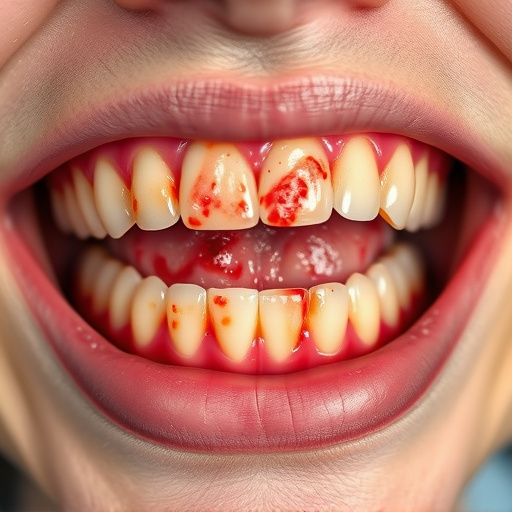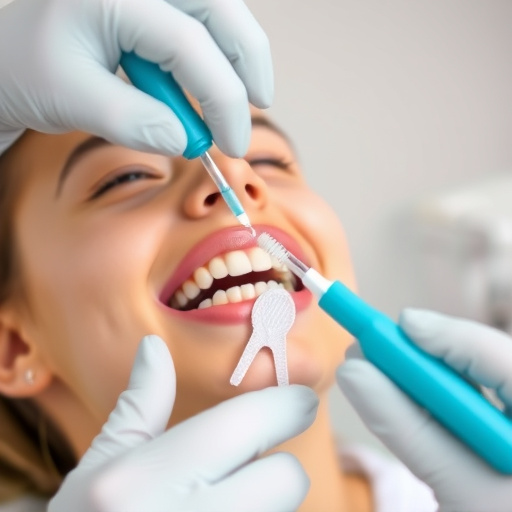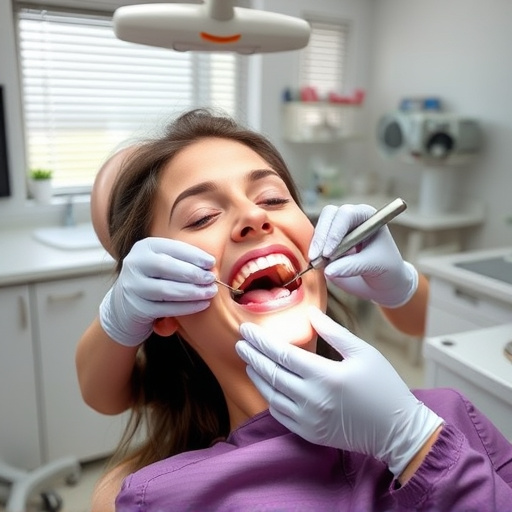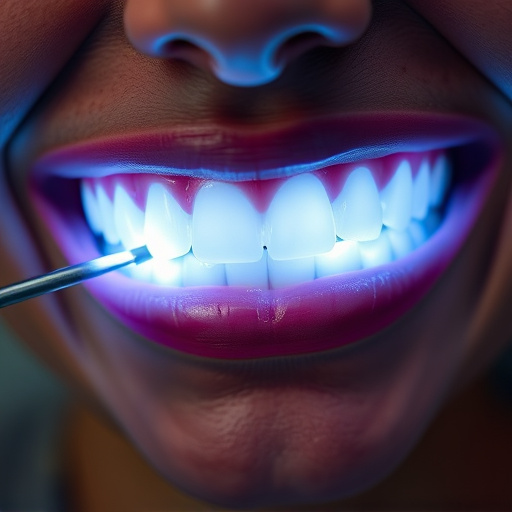Dental crowns and bridges are essential tools in family dentistry for both restorative and preventive care. Crowns protect damaged teeth from further deterioration, maintain oral health, and offer natural-looking surfaces. Bridges replace missing teeth, providing secure support for chewing and speaking naturally, while preventing bone loss and shifting of adjacent teeth. Regular dental cleanings and check-ups are crucial for maintaining optimal bridge condition and protecting crowns from bacteria. Clear aligners can also contribute to preserving the integrity of these structures.
Dental crowns and bridges are essential solutions for restoring oral health and preventing further damage. This article delves into these advanced restorative procedures, explaining how they effectively guard against tooth deterioration and loss. By understanding the role of dental crowns in reinforcing weakened teeth and bridges’ ability to fill gaps, readers will gain insights into maintaining a robust dental structure. We explore preventive care aspects, emphasizing the long-term benefits of these treatments.
- Understanding Dental Crowns: Restoring Tooth Structure
- Bridges: A Fixed Solution for Missing Teeth
- Preventive Care: How Crowns and Bridges Guard Against Further Damage
Understanding Dental Crowns: Restoring Tooth Structure

Dental crowns are a fundamental part of restoring a tooth’s structure and function after damage or decay. They act as a cap, fitting over the remaining portion of a tooth, effectively concealing any imperfections or vulnerabilities while providing a smooth, natural-looking surface. This process is especially crucial for teeth that have suffered extensive decay, chips, or cracks, preventing further deterioration and maintaining oral health.
In the context of family dentistry, dental crowns are often used as a preventive dentistry measure to safeguard teeth from potential issues. By covering damaged teeth, they serve as a protective layer, reducing the risk of bacteria invasion and mitigating issues that could lead to more severe tooth repair procedures or even tooth loss.
Bridges: A Fixed Solution for Missing Teeth

Bridges offer a fixed solution for missing teeth, providing both functional and aesthetic benefits. They are designed to fill gaps left by one or more absent teeth, preventing further damage to adjacent structures like bone loss or neighbouring teeth shifting out of position. This procedure involves placing a custom-made bridge that seamlessly integrates with the surrounding teeth, offering a permanent fix without the need for adjustments over time.
Unlike removable dentures, dental crowns and bridges provide secure support, allowing patients to chew and speak naturally. The bridge is held in place by connecting it to dental crowns placed on the teeth adjacent to the gap. This process not only replaces missing teeth but also restores the overall bite alignment, maintaining facial structure and preserving oral health. Regular dental cleanings are crucial for keeping these bridges in optimal condition, ensuring long-lasting tooth repair and enhancing cosmetic dentistry results.
Preventive Care: How Crowns and Bridges Guard Against Further Damage

Dental crowns and bridges are essential components of preventive dentistry, designed to guard against further damage to teeth and gums. When a tooth is severely damaged or decayed, a crown acts as a protective cap, covering the remaining portion of the natural tooth and restoring its strength and functionality. By sealing off the exposed area, crowns prevent additional bacteria from entering and causing further decay or infection.
Regularly scheduled check-ups with an emergency dental care professional are crucial for maintaining these protective structures. During these visits, dentists can inspect for any signs of wear or damage to both natural teeth and restorative work like bridges. Bridges, which replace missing teeth by joining adjacent crowns together, require meticulous cleaning and maintenance to ensure they remain secure and free from plaque buildup. Incorporating clear aligners into your preventive dentistry routine can also help preserve the integrity of these restorations by providing a more gentle approach to oral care compared to traditional braces.
Dental crowns and bridges aren’t just restorative solutions; they play a proactive role in safeguarding your oral health. By replacing missing teeth, these procedures prevent further damage to surrounding structures, maintaining the natural alignment of your jawline and preserving the overall health of your mouth. In terms of preventive care, dental crowns and bridges offer durability and protection, ensuring long-lasting results and guarding against future complications.














